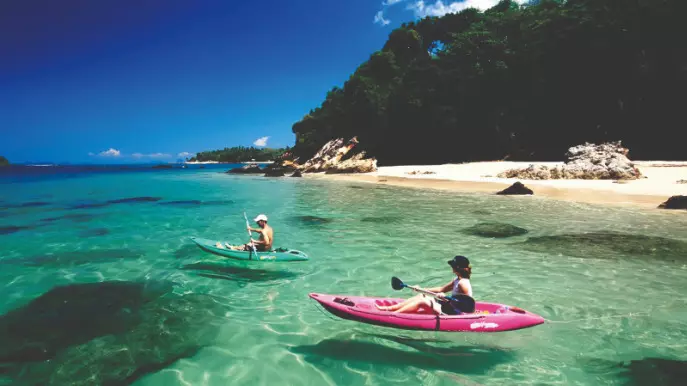Whispering Soul of Thailand
In an era where tourism is highly commodified, often eclipsing the original character of the destination, a soulful journey through hidden, authentic corners of Thailand would reveal the country’s truest self, quietly, in an unalloyed form

The thick humidity of Chennai clung to me as I boarded the early morning flight to Bangkok. Around me, families chatted excitedly about shopping at Chatuchak, visiting the Grand Palace, or partying at Phuket. I smiled. None of that was on my list. I wanted a Thailand trip without the neon lights and postcard clichés — a journey where alleyways, sleepy towns, and whispered recommendations would be my guide. Landing at Suvarnabhumi Airport, I skipped the bustle of Bangkok and caught a local train to Ayutthaya, the ancient capital, but not for the usual temple tours. Instead, I met Boonsri, a boatwoman who ferried people across the Chao Phraya River. “Tourists, they don’t know the real Ayutthaya,” she chuckled, as her small wooden boat rocked gently under my feet. Following her tip, I ventured to Bang Pa-In Market at dawn. Unlike the manicured floating markets popularised for Instagram, this one felt raw and real — fishermen selling river shrimp from rickety boats, old women frying banana fritters, the air thick with the scent of lemongrass and wet wood. I bought a steaming bowl of jok (Thai rice porridge) for 20 baht and sat among the locals, watching monks in orange robes line up for alms. No tour buses. No selfie sticks. Just life unfolding.
From Ayutthaya, I took a slow, third-class train north to Phrae, a town almost erased from tourist maps. The journey itself was a story — rickety seats, conversations stitched from broken English and hand gestures. A wrinkled man named Somchai shared sticky rice and mango with me, laughing heartily when he saw me struggle with the sticky mess. Phrae was a revelation. No giant malls or tuk-tuk touts — just teakwood houses with intricately carved facades and sleepy lanes where dogs dozed in the shade. I stayed in a 120-year-old homestay run by a woman named Mali. She cooked dinner for me — gaeng hang lay, a northern pork curry so rich and earthy it felt like tasting the soul of the land itself. She spoke of how her great-grandfather built the house when teak trading made Phrae wealthy, her voice laced with both pride and melancholy. The next morning, I borrowed a rusted bicycle from Mali and pedalled to Ban Thung Hong, a village famous for hand-dyed indigo fabrics. I met Noi, an artisan with hands permanently stained blue. She showed me how she folded, tied, and dipped the cloth, singing softly as she worked. “No fast fashion here,” she smiled. “Only slow hands and patient hearts.” Craving a coastline but not the crowded beaches of Pattaya or Phuket, I flew to Trang, a province in southern Thailand blessed with untouched islands. From the mainland, I caught a tiny boat to Koh Kradan, a slip of an island where you could walk from one end to the other in 20 minutes. No roaring jet skis, no beach bars pumping EDM — just a handful of bamboo huts, whispering palms, and a sea so clear it felt unreal.
One evening, as the sun melted into the horizon, I met Anurak, a local fisherman fixing his nets. Over grilled fish and chilled Chang beer, he told me about how the tsunami years ago reshaped the coastline and their lives. “Nature is angry sometimes,” he said, staring at the glowing waters, “but she also gives us everything.” The food here was elemental — simple grilled seafood, spicy papaya salad pounded fresh with a mortar and pestle, and coconut ice cream scooped straight into halved shells. No Michelin stars, no reservations. Just flavours born from the sea and earth. My final stop was Nakhon Si Thammarat, a city few outside Thailand even know exists. Here, instead of cabarets or shopping malls, there was Wat Phra Mahathat — an ancient temple complex with a leaning, whitewashed chedi that seemed to defy time. I wandered into a traditional shadow puppet workshop where leather was cut and dyed into intricate figures for performances. The master puppeteer, Khun Lek, proudly showed me a buffalo-hide puppet over 50 years old, its edges frayed like an ancient map. “Our stories live through these,” he said. “We don’t need Netflix.” By the time I boarded my flight back to Chennai, I realized I hadn’t just visited Thailand — I had lived small parts of it, and felt its hidden pulses. No giant Buddhas, no drunken buckets on the beach. Just simple encounters stitched together — a boat woman’s laughter, an artisan’s blue hands, a fisherman’s stories, a puppeteer’s pride. In seeking places where no guidebook pointed, I found a different Thailand — one that lived not in landmarks, but in whispers, waiting for those willing to listen.



